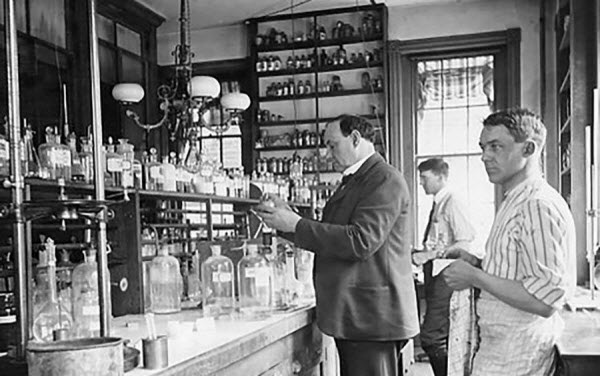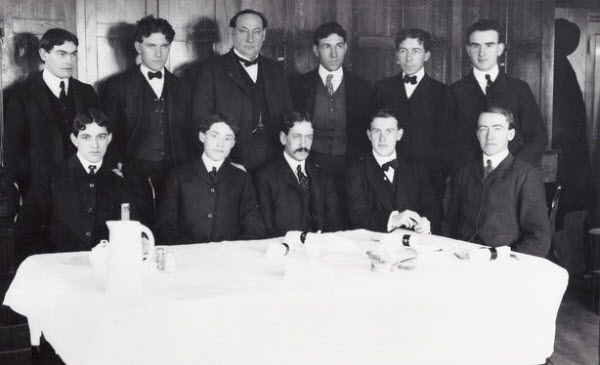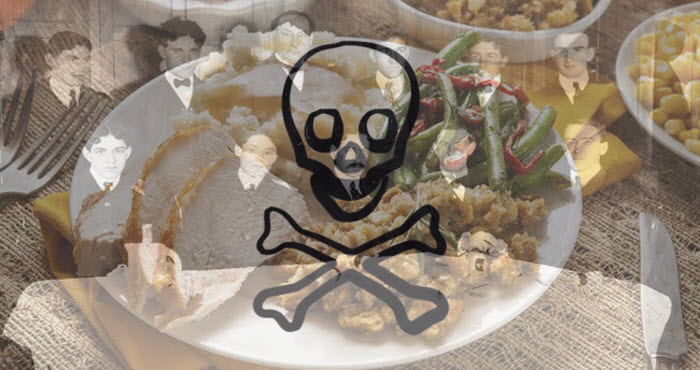The path to modern medical science was far from smooth, contrary to what some might believe. It involved numerous challenging studies and experiments to achieve the desired results. Given that food is a fundamental necessity and key to human health, many individuals in the United States began using food additives and preservatives to prevent spoilage without any oversight, due to the lack of federal food safety regulations at that time. This situation prompted an American scientist to tackle this issue and prove that these additives were highly detrimental to public health, albeit through an unconventional method: supervising one of the most peculiar experiments involving a group of humans dubbed the “Poison Squad.”
The Origin of the Poison Squad
The story of the “Poison Squad” began in the early 20th century when Harvey Wiley, the chief chemist at the U.S. Department of Agriculture, had long harbored suspicions that many food additives and preservatives were unsuitable for human consumption. However, he could not conclusively prove this. To validate his concerns and advocate for stricter food safety standards, Wiley set up a room in the basement of his office designed like a restaurant, complete with a lavish table. He invited several healthy individuals to partake in meals prepared with these additives free of charge, under the supervision of a renowned chef named “Berry,” who had served as the personal chef to the Queen of Bavaria. Wiley specifically chose men for this experiment due to his known aversion to women, believing they were less mentally capable and should not be part of the study.

Alongside Wiley’s supervision, the experiments were conducted under the guise of a “healthy table study” rather than a “come and eat poison” scenario. The process involved mixing food with these toxic additives, which were commonly used at the time. With each additional meal, the quantity of these substances increased, allowing Wiley to observe their effects on human health. Participants would stop eating when symptoms appeared, then move on to another meal and another poison. The unusual nature of these experiments caught the attention of Washington Post reporter George Rothwell Brown, who wrote about Wiley’s study and the participants, calling them the “Poison Squad.”
The Nature of the Poison Squad
Harvey Wiley’s selection of the initial 12 members of the “Poison Squad” was based on their adherence to work ethics, reliability, and integrity. Once they accepted the offer, they swore to serve for a full year, consuming only meals prepared at the Department of Agriculture and agreeing not to sue the government for any adverse effects, including death. Over the following years, 12 new members were recruited for the study.

The experiments were grueling for the participants. They had to regularly measure their vital signs and weight before consuming their meals and provide weekly samples of hair, sweat, stool, and urine. Aside from the daily meals carefully prepared with toxic additives, participants received no additional compensation for any issues they encountered. Often, they could not even enjoy their meals as the additives and preservatives induced vomiting. The supervisors faced their own challenges, notably ensuring that the “Poison Squad” could not identify which parts of the meal contained the “poison.” This task proved difficult with certain substances like “boric acid,” which had a notably metallic taste, leading participants to avoid parts of the meal containing it. To resolve this, Wiley and the chef began giving the men boric acid capsules with their meals, which resolved complaints about this substance. It was later found to be one of the least toxic additives used in the study. Despite ongoing research, as anticipated by Wiley, the “Poison Squad” began experiencing headaches, stomachaches, and gastrointestinal issues from large amounts of other additives, including sulfuric acid, salt, formaldehyde (used to slow milk spoilage), and copper sulfate (used as a pesticide and formerly to turn canned peas green).
The Outcome of the Study
Initially, Wiley was cautious about media attention and instructed participants not to speak to journalists. However, the study and its peculiar nature garnered significant media coverage, leading Wiley to ultimately relent, especially after efforts by government members, including the Secretary of Agriculture, who attempted to suppress reports on the harm of these additives to avoid economic losses and public uproar.
By 1906, Wiley’s efforts with the “Poison Squad” began to bear fruit when Congress passed the Meat Inspection Act and the Pure Food and Drug Act, among the first federal laws to establish food safety standards, originally known as the “Wiley Act.” As a result of these successes, Wiley closed his basement kitchen in 1907 and left his position after several years to join a prominent women’s magazine, Good Housekeeping—a move more surprising than the experiment itself, given his known aversion to women.
In summary, Harvey Wiley concluded that small amounts of these additives and preservatives might not be harmful and could, in fact, protect the public from food spoilage. The real issue lay in how these substances accumulated in the body over time. As for the men who participated, although no long-term follow-up was conducted, some reports indicate that none suffered from chronic or long-term side effects, bringing closure to the experiment, which would not have been possible without the contributions of the “Poison Squad.”
